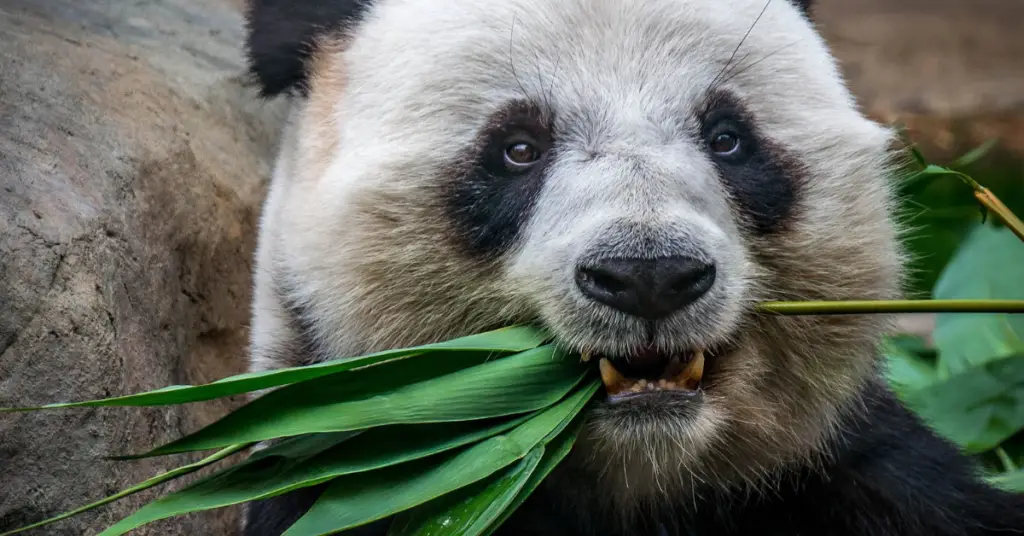Definition of herbivorous animals
Herbivorous animals are animals that primarily consume plants as their main source of food. They obtain the necessary nutrients, such as carbohydrates, proteins, and minerals, from the plants they eat.
Herbivorous animals have evolved specialized teeth, digestive systems, and behaviors to help them extract nutrients from plant matter efficiently. They play an important role in the ecosystem as they help regulate plant growth and provide food for other animals in the food chain.
Importance of herbivorous animals in the ecosystem
Herbivorous animals are essential to the functioning of ecosystems in several ways:
Regulate plant growth: By consuming plants, herbivorous animals prevent any one species of plant from becoming too dominant. This helps to maintain a diverse and healthy plant community.
Nutrient cycling: Herbivorous animals play an important role in returning nutrients to the soil. When they eat plants, they break down the plant matter and excrete it as waste, which fertilizes the soil and provides nutrients for other plants.
Energy transfer: Herbivorous animals are an important food source for carnivorous animals in the ecosystem. They transfer energy from the sun, through the plants they consume, to other levels of the food chain.
Biodiversity: Herbivorous animals are a critical component of the biodiversity of an ecosystem. They help to maintain healthy plant communities, which in turn provide habitat and food for a wide variety of other organisms.
Cultural and economic importance: Herbivorous animals have significant cultural and economic importance to human societies. For example, many cultures raise cows, sheep, and goats for their milk, meat, and wool. Additionally, wildlife watching and ecotourism industries rely heavily on herbivorous animals, such as elephants and giraffes, for their attraction value.
Grazers
Grazers are a type of herbivorous animals that feed on grasses and other low-lying vegetation. Grazing animals are typically large, with broad mouths and specialized teeth and digestive systems that allow them to efficiently consume and digest tough plant material.
Some examples of grazers include:
Bison: These large mammals are native to North America and are known for their grazing behavior. They feed on grasses, sedges, and other low-lying vegetation.
Cows: Cows are domesticated grazers that are commonly raised for their meat and dairy products. They feed on grasses and other plants, and are often managed through rotational grazing practices.
Deer: Deer are herbivorous animals that are found in many parts of the world. They feed on grasses, leaves, and other vegetation, and are an important food source for many predators.
Gazelles: These small, antelope-like animals are found in Africa and Asia. They are adapted to arid environments and feed on grasses and other vegetation.
Zebras: Zebras are known for their distinctive striped coats, but they are also grazers that feed on grasses and other low-lying vegetation.
Browsers
Browsers are a type of herbivorous animals that feed on leaves, twigs, and other parts of trees and shrubs. Browsers are typically smaller than grazers, and have longer necks and legs that allow them to reach higher vegetation.
Some examples of browsers include:
Giraffes: These iconic animals are known for their long necks, which allow them to reach high up into trees and shrubs to browse on leaves and twigs. They are found in sub-Saharan Africa and are the tallest land animals in the world.
Koalas: Koalas are arboreal marsupials that are native to Australia. They are specialized browsers that feed almost exclusively on the leaves of eucalyptus trees.
Moose: Moose are large mammals that are found in the northern hemisphere. They are browsers that feed on leaves, twigs, and bark of trees and shrubs.
Black bears: Black bears are found in North America and are opportunistic feeders that will eat a wide variety of plant and animal material. They are known to be browsers, feeding on the leaves and twigs of trees and shrubs.
Red pandas: Red pandas are small, arboreal mammals that are native to the Himalayas and southwestern China. They are browsers that feed on bamboo leaves and other vegetation.
Frugivores
Frugivores are a type of herbivorous animals that primarily feed on fruits. They play an important role in seed dispersal and are often responsible for helping to maintain plant communities and promote genetic diversity.
Some examples of frugivores include:
Orangutans: Orangutans are great apes that are found in the rainforests of Borneo and Sumatra. They are frugivores that feed on a wide variety of fruits, as well as leaves and other plant material.
Fruit bats: Fruit bats are a diverse group of bats that are found in many parts of the world. They are important frugivores and play a critical role in seed dispersal in many ecosystems.
Monkeys: Many species of monkeys are frugivores that feed on a variety of fruits, seeds, and other plant material. Some examples include howler monkeys, capuchin monkeys, and macaques.
Birds: Many bird species are frugivores, including parrots, toucans, and hornbills. They are important seed dispersers and help to maintain healthy plant communities.
Squirrels: Some species of squirrels are frugivores that feed on nuts, fruits, and other plant material. They also play an important role in seed dispersal.
Teeth and jaws
Herbivorous animals have unique teeth and jaws that are adapted to their specialized diet. The types of teeth and jaws that herbivores have depend on whether they are grazers, browsers, or frugivores.
Grazers have broad, flat teeth with ridges for grinding tough vegetation. They also have strong, muscular jaws that allow them to efficiently break down plant material. Some grazers, like cows and sheep, have multiple stomachs that help them digest tough cellulose fibers in plant material.
Browsers have sharp, pointed teeth that are adapted for tearing and shredding leaves and twigs. They also have long, flexible tongues and elongated necks that allow them to reach high up into trees and shrubs to access vegetation. Browsers, like giraffes and koalas, have specialized digestive systems that help them break down the tough cellulose fibers in plant material.
Frugivores have teeth that are adapted for biting and crushing fruits. They may also have longer snouts or beaks that are adapted for reaching and manipulating fruits. Frugivores often have digestive systems that are specialized for breaking down and extracting nutrients from fruits.
Digestive system
The digestive system of herbivorous animals is specialized to break down the tough cellulose fibers found in plant material. The digestive systems of herbivores can be divided into two main types: foregut fermenters and hindgut fermenters.
Foregut fermenters, like cows, sheep, and deer, have multiple stomachs that help them break down and digest plant material. These animals have a specialized digestive system that allows them to extract nutrients from plant material more efficiently.
The food is first chewed and partially broken down in the mouth, and then it passes into the rumen, the first and largest stomach. The rumen contains billions of bacteria, protozoa, and fungi that break down the cellulose fibers into simpler carbohydrates that can be digested by the animal.
The partially digested food then passes to the reticulum and omasum before finally entering the true stomach, the abomasum, where it is further broken down by digestive enzymes.
Hindgut fermenters, like horses and rabbits, have a large cecum or colon where bacteria break down cellulose fibers. These animals are able to extract more nutrients from plant material than non-herbivorous animals. The food is first chewed and partially broken down in the mouth, and then it passes into the stomach where it is mixed with digestive enzymes. The partially digested food then passes to the large intestine, where it is broken down by bacteria in the cecum or colon. The bacteria break down the cellulose fibers into simpler carbohydrates that can be absorbed by the animal.
Behavior
Herbivorous animals exhibit a range of behaviors that are adapted to their specialized diet. The behavior of herbivores depends on whether they are grazers, browsers, or frugivores.
Grazers are herbivores that primarily feed on grasses and other low-lying vegetation. Grazers often form herds, which allows them to more efficiently locate and access food. They also often have a grazing pattern that helps maintain grasslands. Grazers, like bison and zebras, have adapted to eat quickly and move on, allowing the grasses to recover.
Browsers are herbivores that primarily feed on leaves, bark, and twigs of trees and shrubs. Browsers often have a more solitary lifestyle than grazers, and they often have an elongated neck and flexible tongue that allows them to reach high up into trees to access vegetation. Browsers, like giraffes and koalas, have adapted to a slower pace of feeding, and they often spend several hours per day feeding on leaves.
Frugivores are herbivores that primarily feed on fruits. Frugivores are often highly mobile and able to cover large areas in search of food. They may also have specialized behavior for obtaining fruit, such as the use of tools or cooperative feeding behaviors. Frugivores, like monkeys and birds, are important for seed dispersal and are often attracted to ripe fruit.
Adaptations of herbivorous animals
Herbivorous animals have evolved a range of adaptations that allow them to efficiently extract nutrients from plant material. These adaptations can be physical, behavioral, or physiological.
Physical adaptations:
Teeth and jaws: Herbivorous animals have specialized teeth and jaws that are adapted to their particular diet. Grazers have broad, flat teeth with ridges for grinding tough vegetation, browsers have sharp, pointed teeth that are adapted for tearing and shredding leaves and twigs, and frugivores have teeth that are adapted for biting and crushing fruits.
Digestive system: The digestive systems of herbivores are specialized to break down the tough cellulose fibers found in plant material. Foregut fermenters, like cows and deer, have multiple stomachs that allow them to extract more nutrients from plant material, while hindgut fermenters, like horses and rabbits, have a large cecum or colon where bacteria break down cellulose fibers.
Long necks and limbs: Browsers, like giraffes, have evolved long necks and limbs that allow them to reach high up into trees and shrubs to access vegetation.Behavioral adaptations:Herding and grazing: Grazers often form herds, which allows them to more efficiently locate and access food. Grazers, like bison and zebras, have adapted to eat quickly and move on, allowing the grasses to recover.
Slow pace of feeding: Browsers, like koalas, have adapted to a slower pace of feeding and often spend several hours per day feeding on leaves. Fruit-seeking behavior: Frugivores, like monkeys and birds, are highly mobile and able to cover large areas in search of fruit. They may also have specialized behavior for obtaining fruit, such as the use of tools or cooperative feeding behaviors.
Physiological adaptations:
Fermentation: Herbivorous animals have specialized digestive systems that allow them to extract more nutrients from plant material. The fermentation process that occurs in the stomachs of herbivores also produces important byproducts, like volatile fatty acids and methane gas, which are important for maintaining healthy ecosystems.
Detoxification: Some herbivores, like the koala, have evolved the ability to detoxify poisonous eucalyptus leaves, which are their primary food source.
Camouflage: Some herbivorous animals, like deer, have evolved camouflage to help them avoid predators. Their coat color and patterns can help them blend into their surroundings, making them harder to spot.
Migration: Some herbivorous animals, like wildebeest and caribou, migrate over long distances to find new sources of food. This allows them to avoid overgrazing in one area and find fresh vegetation in another.
Specialized digestive enzymes: Some herbivorous animals, like cows and deer, have specialized digestive enzymes that are adapted to break down specific types of plant material. For example, cows have enzymes that can break down cellulose fibers in grasses, while deer have enzymes that can break down lignin in woody plant material.
Hooves: Many herbivorous animals, like horses and cows, have evolved specialized hooves that allow them to efficiently move over different types of terrain. Hooves can also help herbivores avoid predators by allowing them to run faster and more easily navigate rocky or uneven terrain.
Symbiotic relationships: Some herbivorous animals, like cows and termites, have developed symbiotic relationships with microorganisms that live in their digestive tracts. These microorganisms help break down plant material and extract more nutrients, which allows the herbivore to survive on a diet that would otherwise be insufficient.
1. Elephants
Elephants are one of the largest herbivorous animals on earth and have a number of unique adaptations that allow them to efficiently extract nutrients from plant material.
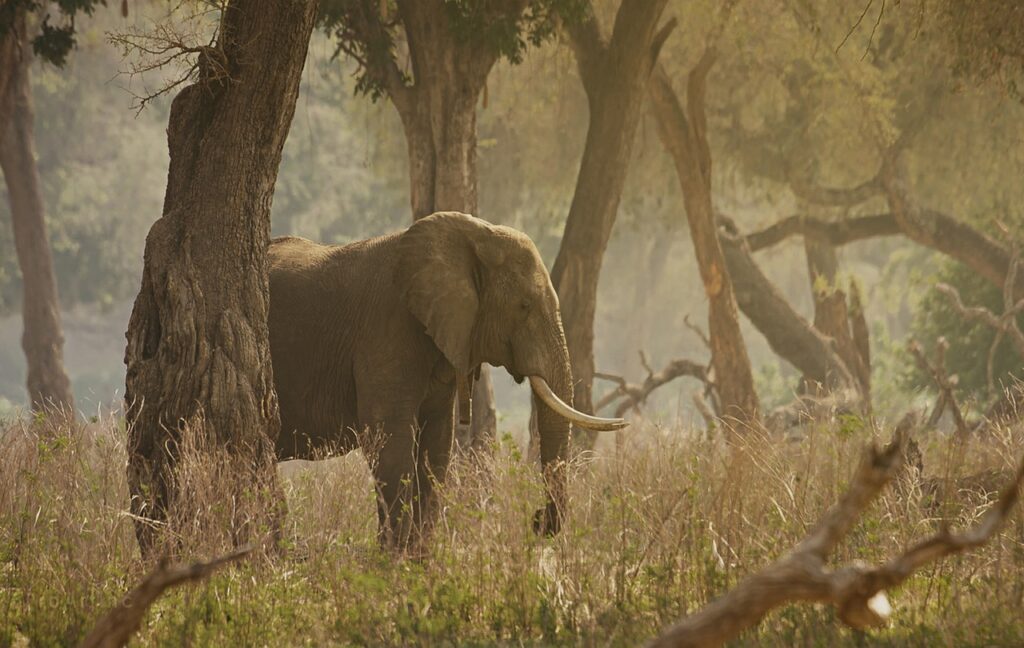
Physical adaptations:
Trunks: Elephants have long, muscular trunks that are used for a variety of tasks, including grasping and tearing branches and foliage, pulling up grass and other vegetation, and drinking water..
Teeth: Elephants have six sets of teeth throughout their lifetime, which are replaced as they wear down from constant use. Their molars are large, flat, and ridged, which allows them to grind down tough plant material.Behavioral adaptations:
High food intake: Elephants are known for their large food intake, consuming up to 300 pounds of vegetation per day. This allows them to meet their nutritional needs on a diet of low-nutrient grasses and shrubs.
Selective feeding: Elephants are highly selective feeders and will use their trunks to carefully select the most nutritious parts of a plant, such as the leaves, bark, and fruit.
Seed dispersal: Elephants play an important role in seed dispersal, as they consume large quantities of fruit and excrete the seeds over a wide area.
Physiological adaptations:
Long digestive process: Elephants have a long digestive process that allows them to break down tough plant material. The process can take up to several days and involves fermenting the plant material in the stomach.
Efficient water retention: Elephants are able to efficiently retain water in their bodies, which allows them to survive in dry environments. They can consume up to 50 gallons of water in a single day and store it in their bodies for later use.
2. Giraffes
Giraffes are herbivorous animals that have evolved unique adaptations to feed on the high branches of trees and shrubs in their habitat.
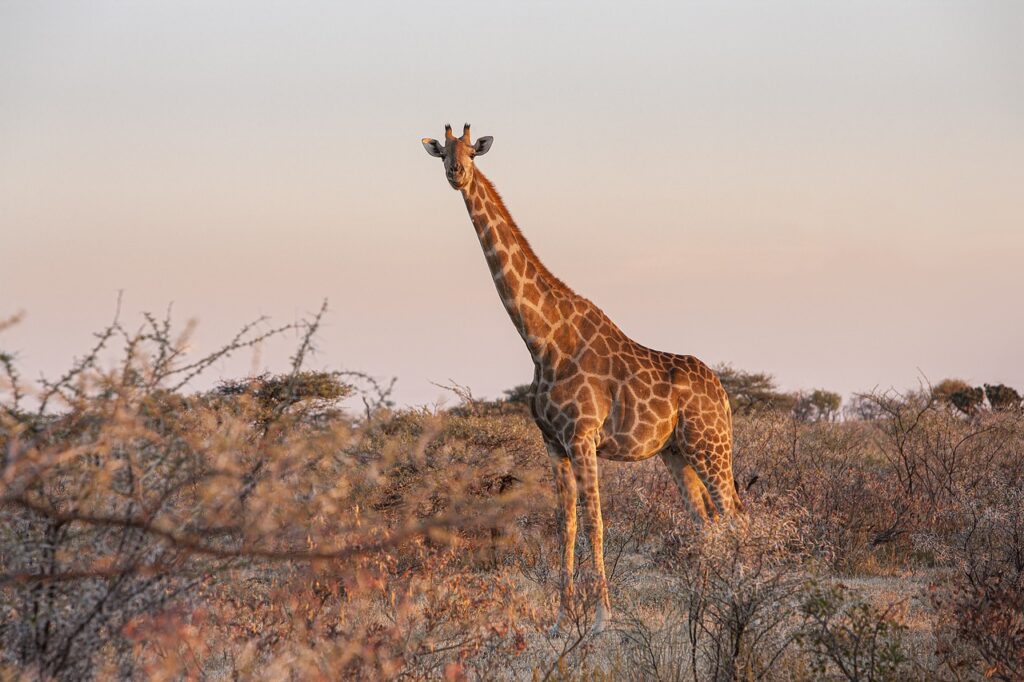
Physical adaptations:
Long neck: Giraffes have extremely long necks that allow them to reach high branches that other animals cannot access. In fact, the giraffe’s neck is so long that it contains the same number of vertebrae as most other mammals, despite being much longer.
Long tongue: Giraffes also have long tongues that can extend up to 18 inches. This allows them to reach leaves and other vegetation that are out of reach of their necks.
Behavioral adaptations:
Selective feeding: Giraffes are selective feeders and prefer leaves and shoots from specific tree and shrub species. They use their long necks to carefully select the most nutritious parts of the plant.
Vertical movement: Giraffes have a unique way of moving their legs that allows them to reach high branches. They move both legs on one side of their body at the same time, which creates a rocking motion that propels them forward.
Physiological adaptations:
High blood pressure: Giraffes have extremely high blood pressure, which allows them to pump blood up their long necks and into their heads without experiencing fainting or brain damage.
Rumen fermentation: Giraffes have a complex stomach that allows them to ferment and break down tough plant material. This process can take up to several days and allows them to extract more nutrients from their food.
3. Cows
Cows are domesticated herbivorous animals that are primarily raised for meat, milk, and dairy products. They have a number of adaptations that allow them to efficiently digest plant material and extract the necessary nutrients.
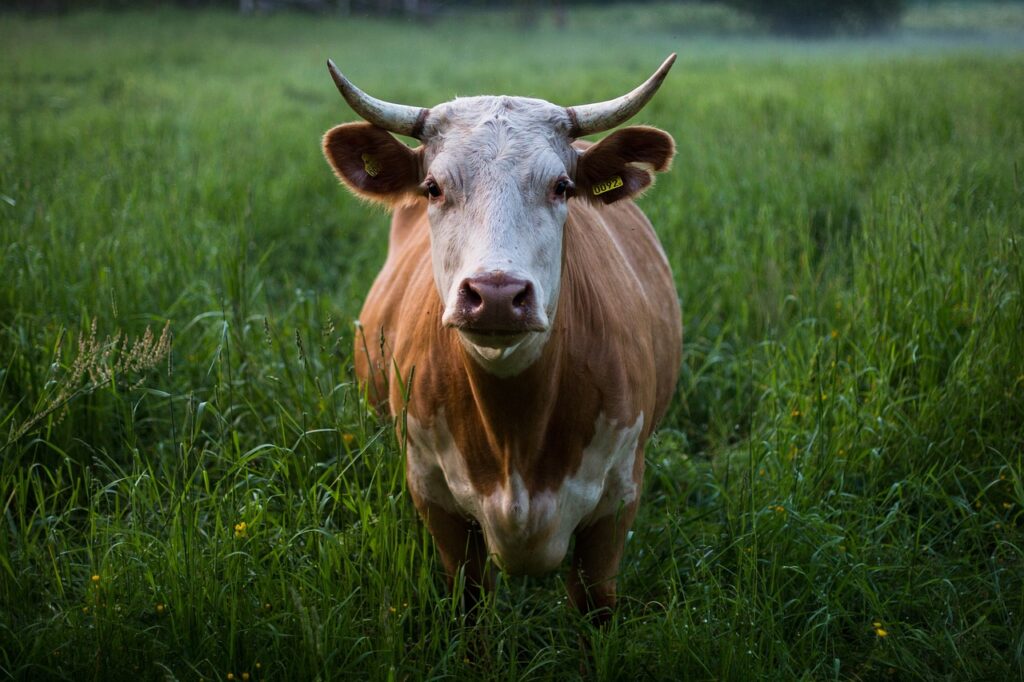
Physical adaptations:
Wide, flat teeth: Cows have wide, flat teeth that are adapted for grinding and breaking down tough plant material, such as grass and hay.
Four-chambered stomach: Cows have a complex four-chambered stomach that allows them to ferment and break down cellulose-rich plant material. This process involves the regurgitation and re-chewing of food (known as “cud-chewing”), which helps to break it down further.
Physiological adaptations:
Microbial fermentation: Cows have a complex microbial community in their stomachs that helps to ferment and break down plant material. This process produces volatile fatty acids and other byproducts that the cow can use for energy.
Water conservation: Cows have a highly efficient water conservation system that allows them to extract as much water as possible from their food. This helps them to survive in arid environments with limited water availability.
Behavioral adaptations:
Grazing: Cows are well-adapted to grazing and spend much of their day walking and grazing on grass and other vegetation. They have a keen sense of smell that allows them to detect the most nutritious plants.
Social behavior: Cows are social animals and tend to live in herds or groups. This behavior helps them to efficiently locate food, protect themselves from predators, and share knowledge about the best feeding areas.
4. Horses
Horses are herbivorous animals that have evolved a number of adaptations to efficiently feed on a diet of plant material, primarily grasses and hay.
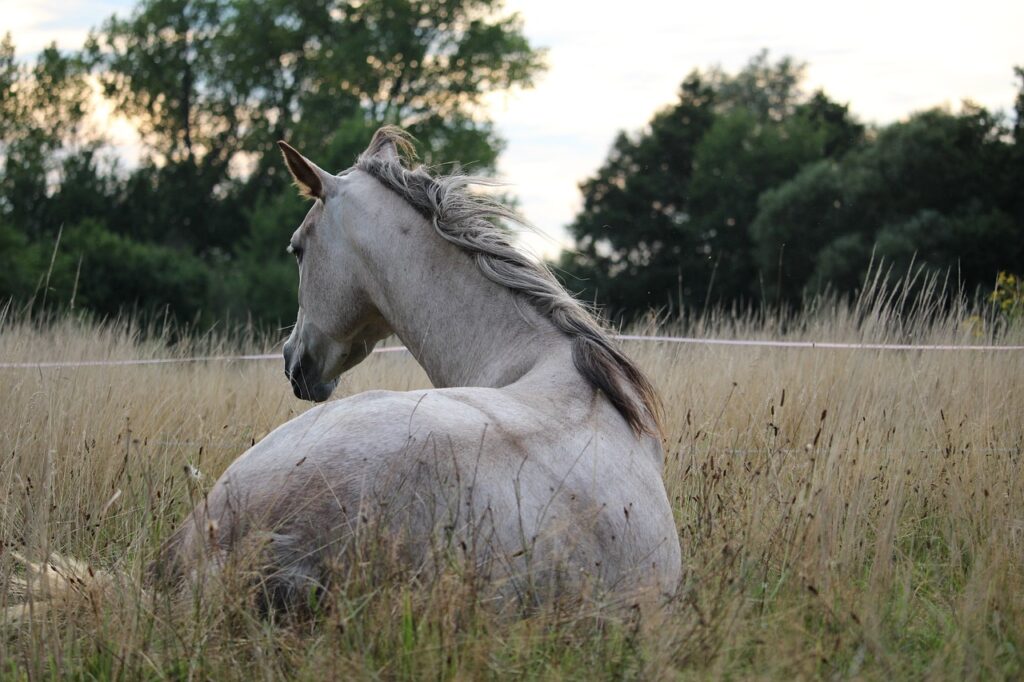
Physical adaptations:
Strong, flat teeth: Horses have strong, flat teeth that are adapted for grinding and breaking down tough plant material, such as grass and hay.
Long, mobile lips: Horses have long, mobile lips that allow them to selectively feed on the most nutritious parts of grass and other vegetation.
Behavioral adaptations:
Grazing: Horses are well-adapted to grazing and spend much of their day walking and grazing on grass and other vegetation. They have a keen sense of smell that allows them to detect the most nutritious plants.
Social behavior: Horses are social animals and tend to live in herds or groups. This behavior helps them to efficiently locate food, protect themselves from predators, and share knowledge about the best feeding areas.
Physiological adaptations:
Rumen fermentation: Horses have a complex stomach that allows them to ferment and break down cellulose-rich plant material. This process involves the regurgitation and re-chewing of food, similar to cows.
Water conservation: Horses have a highly efficient water conservation system that allows them to extract as much water as possible from their food. This helps them to survive in arid environments with limited water availability.
5. Rabbits
Rabbits are small, herbivorous mammals that have evolved a number of adaptations to efficiently digest plant material, primarily grasses and leafy greens.
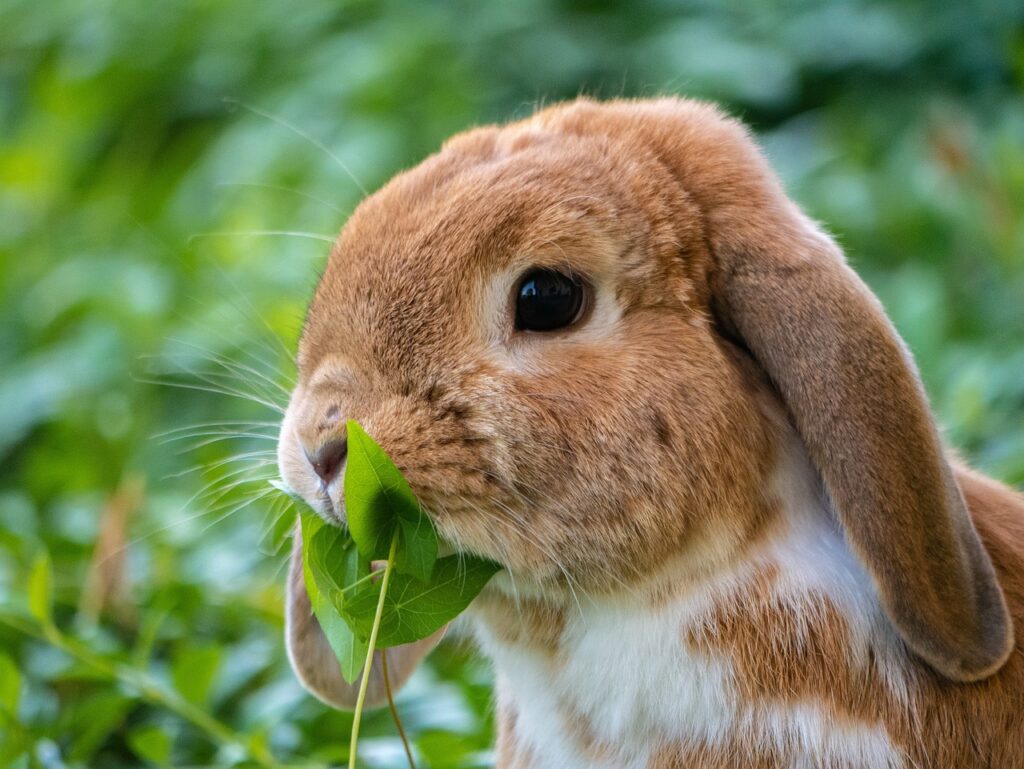
Physical adaptations:
Large incisors: Rabbits have large, strong incisors that are adapted for cutting and breaking down tough plant material.
Multiple sets of teeth: Rabbits have four sets of teeth that continuously grow throughout their lifetime. This allows them to maintain sharp, efficient teeth for grinding and breaking down plant material.
Behavioral adaptations:
Grazing: Rabbits are well-adapted to grazing and spend much of their day feeding on grasses and other vegetation. They have a keen sense of smell and vision that allows them to detect and locate the most nutritious plants.
Coprophagy: Rabbits practice a unique behavior called coprophagy, where they consume their own feces in order to extract as much nutrition as possible from their food.
Physiological adaptations:
Hindgut fermentation: Rabbits have a highly efficient hindgut fermentation system that allows them to break down tough plant material. This process involves the fermentation of food in the cecum, a pouch located at the beginning of the large intestine.
Efficient water extraction: Rabbits have a highly efficient system for extracting water from their food, which allows them to survive in arid environments with limited water availability.
6. Deer
Deer are herbivorous mammals that have evolved a number of adaptations to efficiently feed on a diet of plant material, primarily leaves, twigs, and grasses.
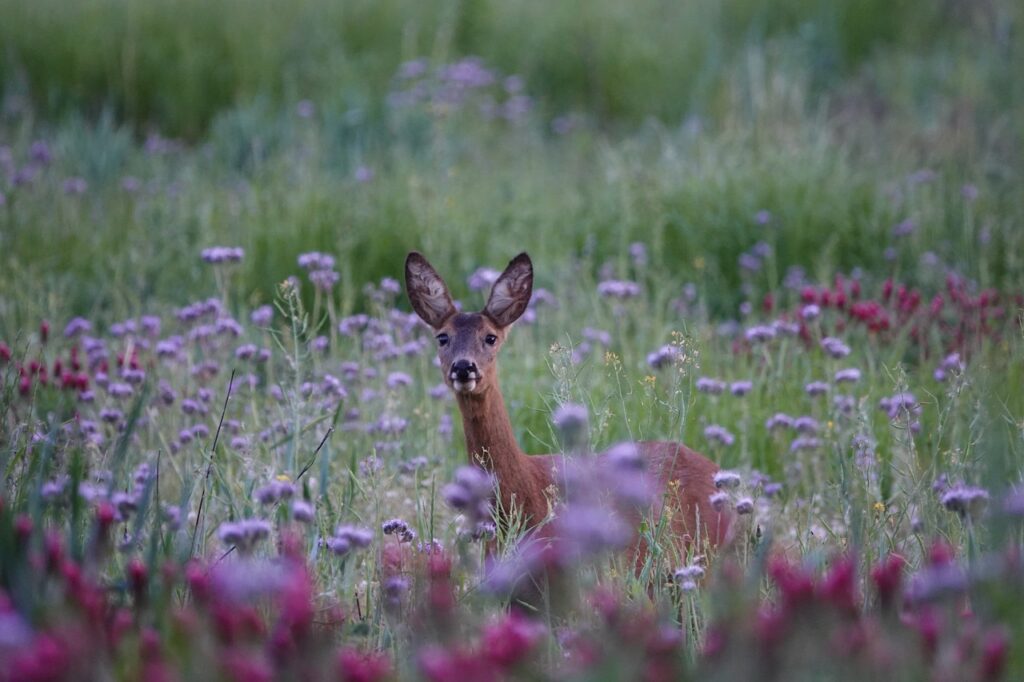
Physical adaptations:
Dental adaptations: Deer have four sharp, strong incisors in the front of their mouths, which are adapted for cutting and breaking down tough plant material. They also have a series of molars and premolars towards the back of their mouths, which are used for grinding.
Flexible lips: Deer have flexible lips that allow them to selectively feed on the most nutritious parts of plants, such as leaves and twigs.
Behavioral adaptations:
Grazing and browsing: Deer are well-adapted to both grazing on grasses and browsing on leaves and twigs. They have a keen sense of smell and vision that allows them to detect the most nutritious plants.
Seasonal feeding: Deer change their feeding habits throughout the year, depending on the availability of food. During the summer and fall, they mainly feed on grasses and herbaceous plants, while in the winter, they switch to browsing on woody plants, such as shrubs and trees.
Physiological adaptations:
Four-chambered stomach: Deer have a four-chambered stomach, which allows them to ferment and break down cellulose-rich plant material. This process involves the regurgitation and re-chewing of food, similar to cows.
Efficient water extraction: Deer have a highly efficient system for extracting water from their food, which allows them to survive in arid environments with limited water availability.
7. Koalas
Koalas are herbivorous marsupials that are adapted to feed on eucalyptus leaves, which are toxic to most other animals.
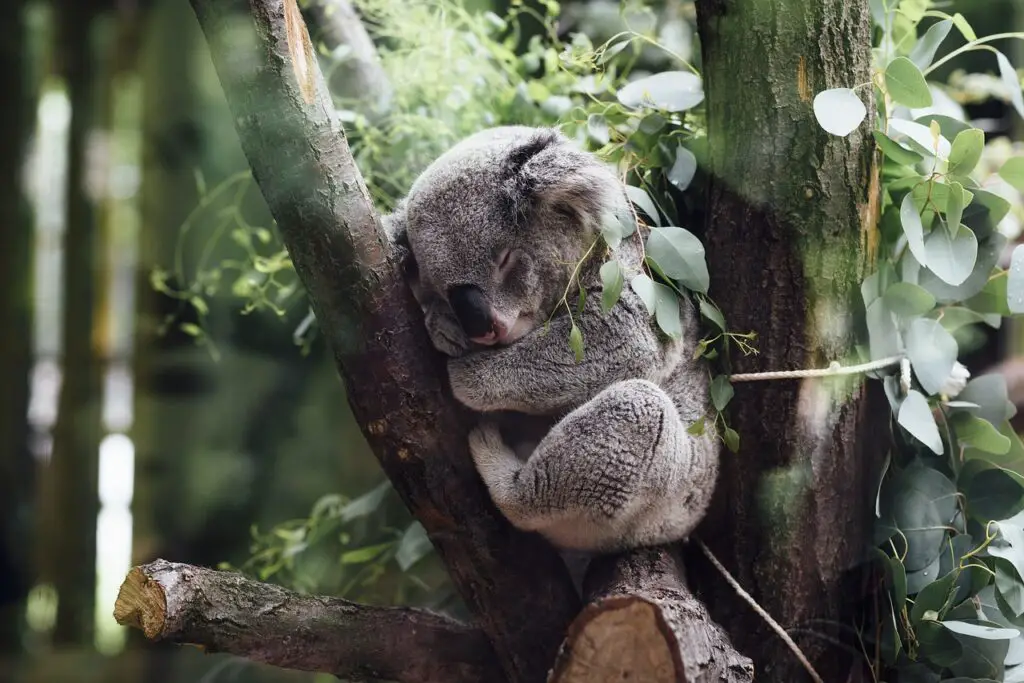
Physical adaptations:
Unique dentition: Koalas have sharp incisors and molars that are adapted for cutting and grinding tough, fibrous eucalyptus leaves. Their molars have cusps that are well-suited for shearing and slicing leaves.
Reduced digestive system: Koalas have a reduced digestive system, with a shorter small intestine and cecum compared to other herbivorous animals. This allows them to process eucalyptus leaves more quickly, as the leaves are low in nutrients and difficult to digest.
Behavioral adaptations:
Selective feeding: Koalas are highly selective in their feeding habits and will only eat certain species of eucalyptus leaves. They have a keen sense of smell that allows them to detect the most nutritious leaves, and will move from tree to tree in search of preferred species.
Low energy expenditure: Koalas have a low energy expenditure and spend most of their day sleeping and resting in trees. This conserves energy and allows them to survive on a diet of low-nutrient eucalyptus leaves.
Physiological adaptations:
Detoxification system: Koalas have a unique detoxification system that allows them to break down the toxins in eucalyptus leaves. This involves the liver breaking down the toxic compounds into less harmful forms, which are then eliminated through the kidneys.
Water extraction: Koalas obtain most of their water from the leaves they eat, and have a highly efficient system for extracting water from the leaves. They can also conserve water by producing concentrated urine.
8. Pandas
Pandas are herbivorous bears that are adapted to feed almost exclusively on bamboo leaves and stems.
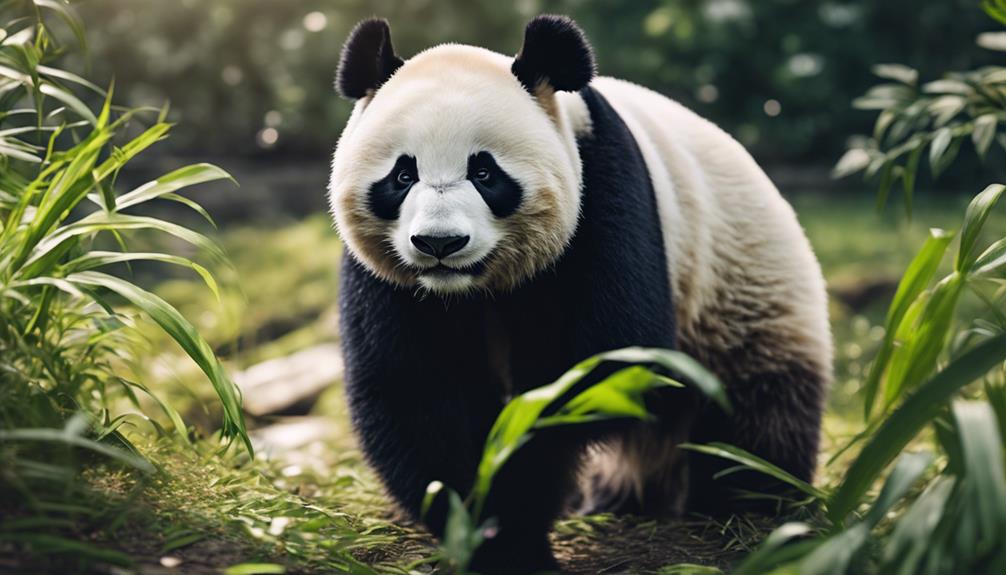
Physical adaptations:
Specialized dentition: Pandas have unique dentition with strong, broad molars that are adapted for crushing and grinding tough bamboo stems and leaves. Their jaws have powerful muscles that allow them to exert the force needed to break down the tough plant material.
Strong limbs: Pandas have strong, muscular forelimbs with flexible wrist bones that are adapted for grasping and manipulating bamboo. They can also climb trees to reach new bamboo shoots.
Behavioral adaptations:
Selective feeding: Pandas are highly selective in their feeding habits and will only eat certain species of bamboo leaves and stems. They have a keen sense of smell that allows them to detect the most nutritious bamboo plants.
Seasonal feeding: Pandas have adapted to the seasonal fluctuations in bamboo availability, and will migrate to areas with more abundant bamboo during the summer months.
Physiological adaptations:
Digestive system: Pandas have a unique digestive system that is adapted for extracting nutrients from bamboo. They have a specialized stomach that can break down tough bamboo fibers, as well as a long, coiled intestine that allows for efficient absorption of nutrients.
Low energy expenditure: Pandas have a low energy expenditure and spend most of their day resting and conserving energy. This is necessary to survive on a diet of low-nutrient bamboo leaves and stems.
9. Squirrels
Squirrels are herbivorous rodents that feed on a wide variety of plant material, including nuts, seeds, fruits, and vegetables.
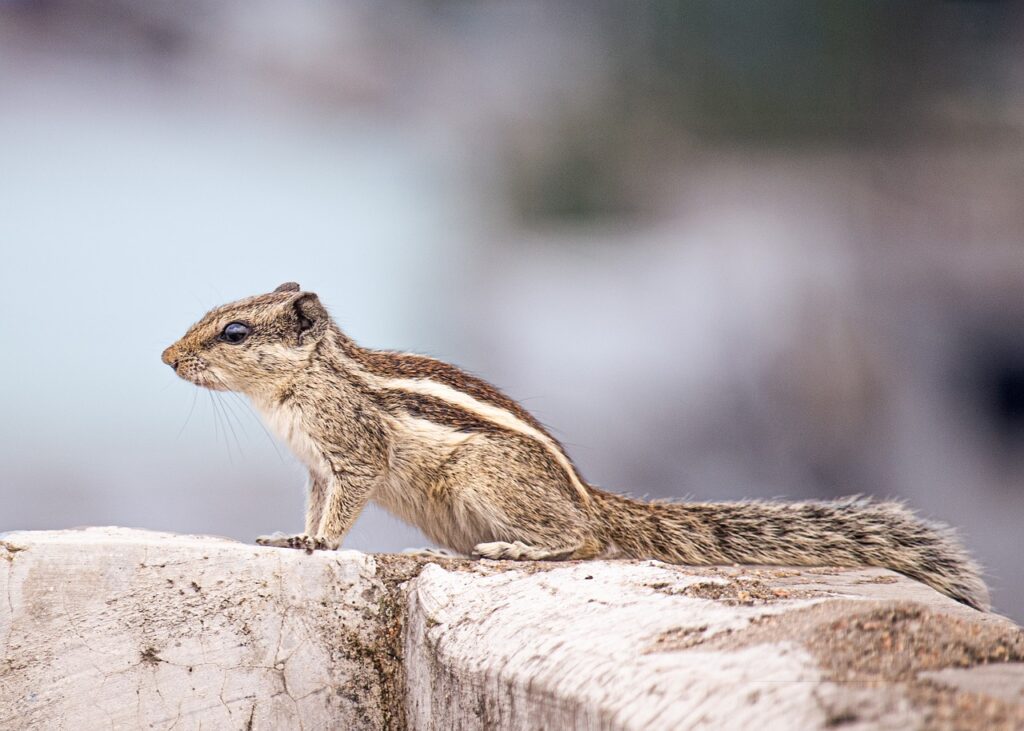
Physical adaptations:
Strong jaws: Squirrels have strong, sharp front teeth that are adapted for gnawing through hard nut shells and other tough plant material.
Agile bodies: Squirrels have slender, agile bodies that allow them to climb trees and move quickly through branches in search of food.
Behavioral adaptations:
Hoarding: Squirrels are well-known for their habit of hoarding food, particularly nuts and seeds, for the winter months when food is scarce.
Selective feeding: Squirrels are selective in their feeding habits and will only eat certain parts of plants, such as the seeds or fruits.
Physiological adaptations:
Digestive system: Squirrels have a specialized digestive system that is adapted for breaking down and extracting nutrients from tough plant material. They have a four-chambered stomach that allows for efficient digestion and absorption of nutrients.
Specialized gut bacteria: Squirrels have specialized gut bacteria that help break down tough plant fibers and extract nutrients from their food.
10. Camels
Camels are herbivorous mammals that are adapted to survive in harsh desert environments, where vegetation is scarce and water is limited.
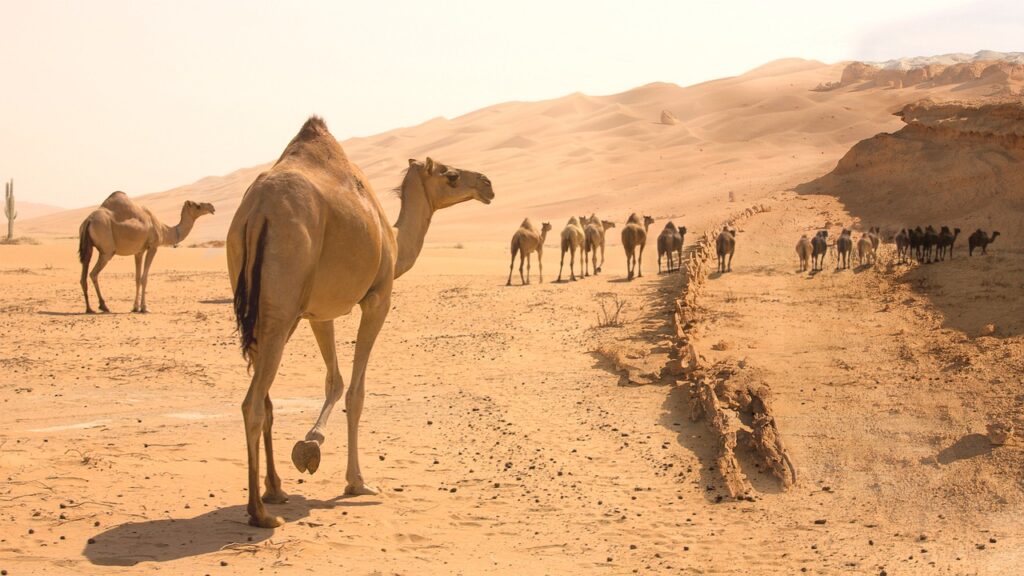
Physical adaptations:
Humps: Camels have one or two humps on their backs, which are actually fat stores that provide energy and nutrients when food is scarce.
Tough mouths: Camels have tough mouths and lips that are adapted for eating thorny desert plants.
Behavioral adaptations:
Water conservation: Camels are able to conserve water and survive for long periods of time without drinking. They can go several days without water and can drink up to 30 gallons (113 liters) in a single sitting.
Selective feeding: Camels are selective in their feeding habits and will only eat certain types of desert vegetation, such as acacia, tamarisk, and thorny shrubs.
Physiological adaptations:
Efficient digestion: Camels have a specialized digestive system that is adapted for breaking down tough desert vegetation. They have a three-chambered stomach that allows for efficient digestion and absorption of nutrients.
Urine concentration: Camels are able to concentrate their urine, which helps them conserve water and prevent dehydration.
11. Hippos
Hippos are semi-aquatic herbivorous mammals that are found in rivers and lakes in sub-Saharan Africa.
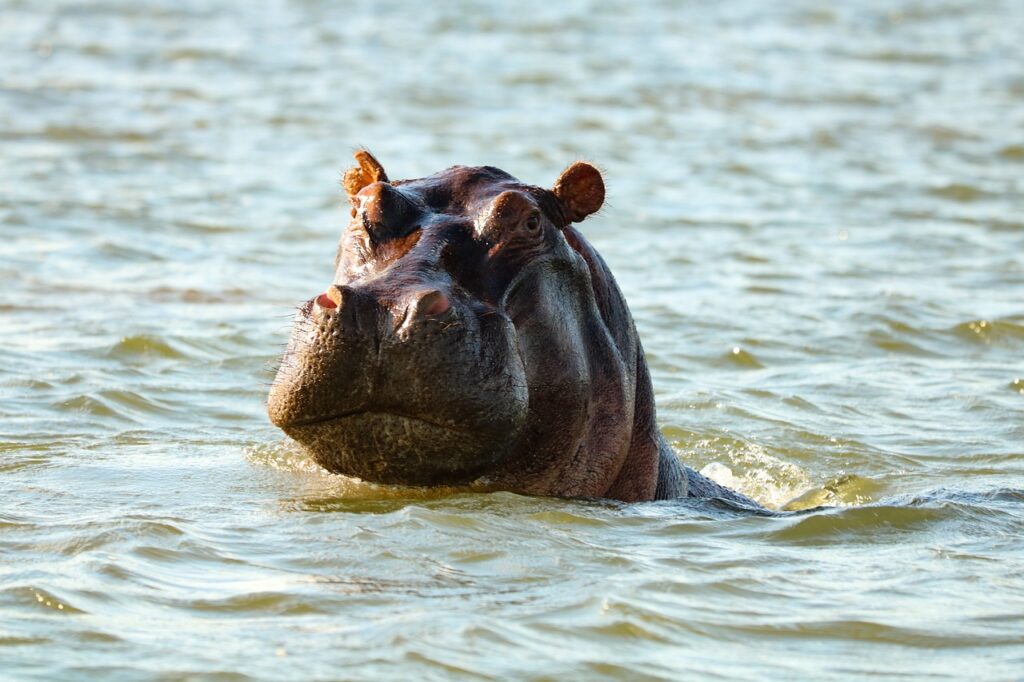
Physical adaptations:
Large jaws and teeth: Hippos have large jaws and teeth that are adapted for grinding tough grasses and other vegetation.
Thick skin: Hippos have thick, tough skin that is adapted for protection against sunburn and insect bites.
Behavioral adaptations:
Selective feeding: Hippos are selective in their feeding habits and will only eat certain types of vegetation, such as grasses and aquatic plants.
Aquatic lifestyle: Hippos are adapted for an aquatic lifestyle and spend much of their time in water, where they can feed on submerged vegetation.
Physiological adaptations:
Efficient digestion: Hippos have a specialized digestive system that is adapted for breaking down tough grasses and other vegetation. They have a complex four-chambered stomach that allows for efficient digestion and absorption of nutrients.
Water conservation: Hippos are able to conserve water and prevent dehydration by producing concentrated urine and retaining water in their bodies.
12. Goats
Goats are herbivorous mammals that are found in various habitats around the world, including grasslands, mountains, and deserts.
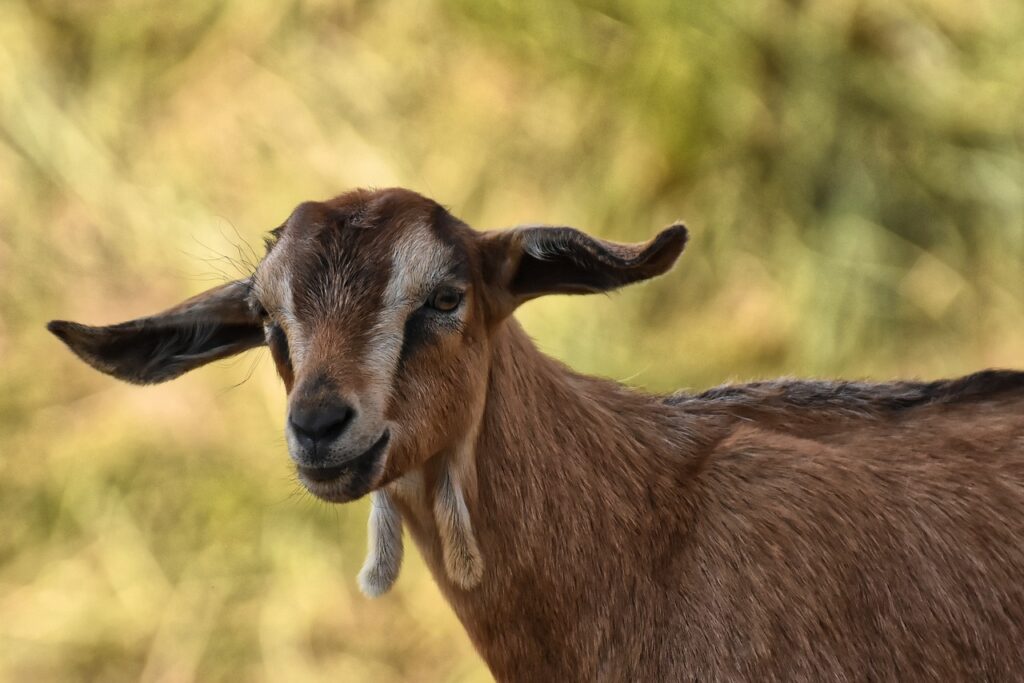
Physical adaptations:
Specialized teeth and mouth: Goats have specialized teeth and a prehensile tongue that are adapted for browsing on a variety of vegetation, including tough woody plants.
Horns: Many species of goats have horns that are used for defense against predators and for competing with other goats for mates and resources.
Behavioral adaptations:
Selective feeding: Goats are selective in their feeding habits and will browse on a wide variety of vegetation, including leaves, stems, flowers, and woody shrubs.
Climbing ability: Goats are excellent climbers and are able to navigate steep and rocky terrain in search of food and water.
Physiological adaptations:
Efficient digestion: Goats have a specialized digestive system that is adapted for breaking down tough plant material. They have a four-chambered stomach that allows for efficient digestion and absorption of nutrients.
Water conservation: Goats are able to conserve water and prevent dehydration by producing concentrated urine and retaining water in their bodies.
13. Sheep
Sheep are herbivorous mammals that are found in various habitats around the world, including grasslands, mountains, and deserts.
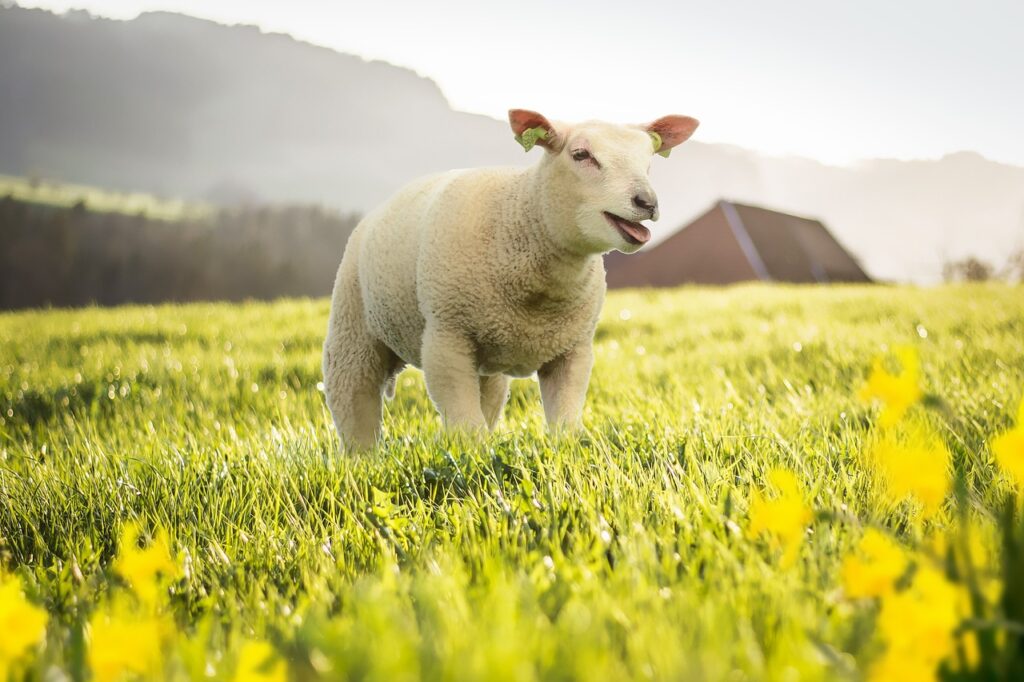
Physical adaptations:
Specialized teeth and mouth: Sheep have specialized teeth and a divided upper lip that are adapted for grazing on a variety of vegetation, including short grasses.
Wool: Sheep have a thick coat of wool that is adapted for insulation and protection against the elements.
Behavioral adaptations:
Selective feeding: Sheep are selective in their feeding habits and will graze on a wide variety of vegetation, including grasses and legumes.
Flocking behavior: Sheep are social animals and often form large flocks for protection against predators and for finding food and water.
Physiological adaptations:
Efficient digestion: Sheep have a specialized digestive system that is adapted for breaking down tough plant material. They have a four-chambered stomach that allows for efficient digestion and absorption of nutrients.
Water conservation: Sheep are able to conserve water and prevent dehydration by producing concentrated urine and retaining water in their bodies.
14. Alpacas
Alpacas are herbivorous mammals that are native to the Andes Mountains of South America.
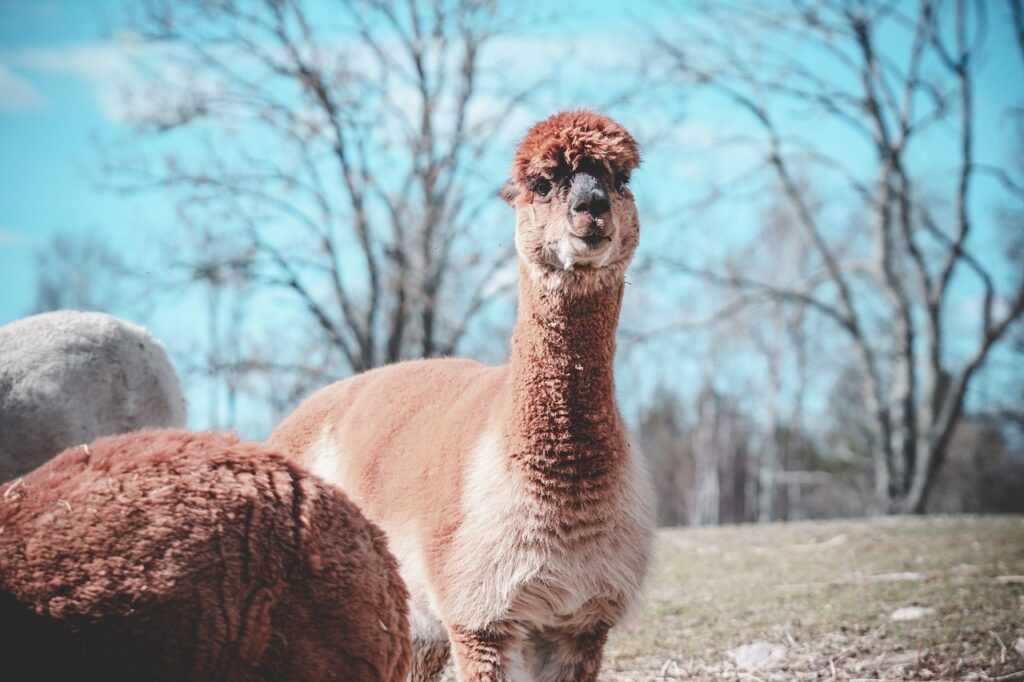
Physical adaptations:
Specialized teeth and mouth: Alpacas have specialized teeth and a divided upper lip that are adapted for grazing on a variety of vegetation, including short grasses.
Fur: Alpacas have a thick coat of fur that is adapted for insulation and protection against the cold temperatures in their native habitat.
Behavioral adaptations:
Selective feeding: Alpacas are selective in their feeding habits and will graze on a variety of vegetation, including grasses, leaves, and stems.
Herding behavior: Alpacas are social animals and often form herds for protection against predators and for finding food and water.
Physiological adaptations:
Efficient digestion: Alpacas have a specialized digestive system that is adapted for breaking down tough plant material. They have a three-compartment stomach that allows for efficient digestion and absorption of nutrients.
Water conservation: Alpacas are able to conserve water and prevent dehydration by producing concentrated urine and retaining water in their bodies.
15. Llamas
Llamas are herbivorous mammals that are native to the Andes Mountains of South America.
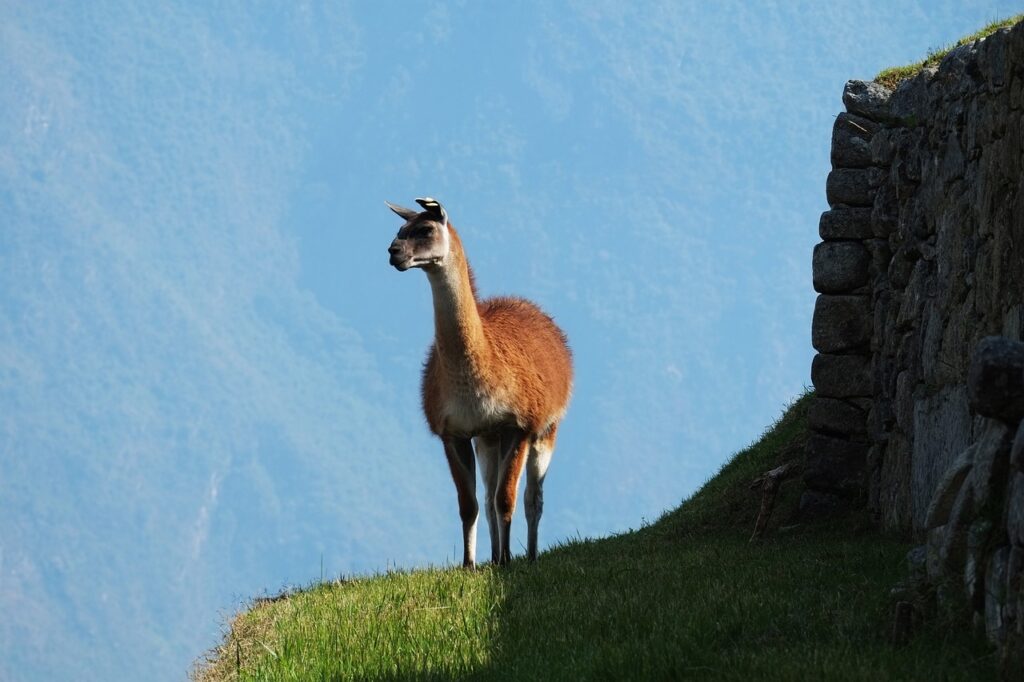
Physical adaptations:
Specialized teeth and mouth: Llamas have specialized teeth and a divided upper lip that are adapted for grazing on a variety of vegetation, including short grasses.
Fur: Llamas have a thick coat of fur that is adapted for insulation and protection against the cold temperatures in their native habitat.
Behavioral adaptations:
Selective feeding: Llamas are selective in their feeding habits and will graze on a variety of vegetation, including grasses, leaves, and stems.
Herding behavior: Llamas are social animals and often form herds for protection against predators and for finding food and water.
Physiological adaptations:
Efficient digestion: Llamas have a specialized digestive system that is adapted for breaking down tough plant material. They have a three-compartment stomach that allows for efficient digestion and absorption of nutrients.
Water conservation: Llamas are able to conserve water and prevent dehydration by producing concentrated urine and retaining water in their bodies.
16. Bison
Bison are herbivorous mammals that are native to North America. They are also known as American buffalo.
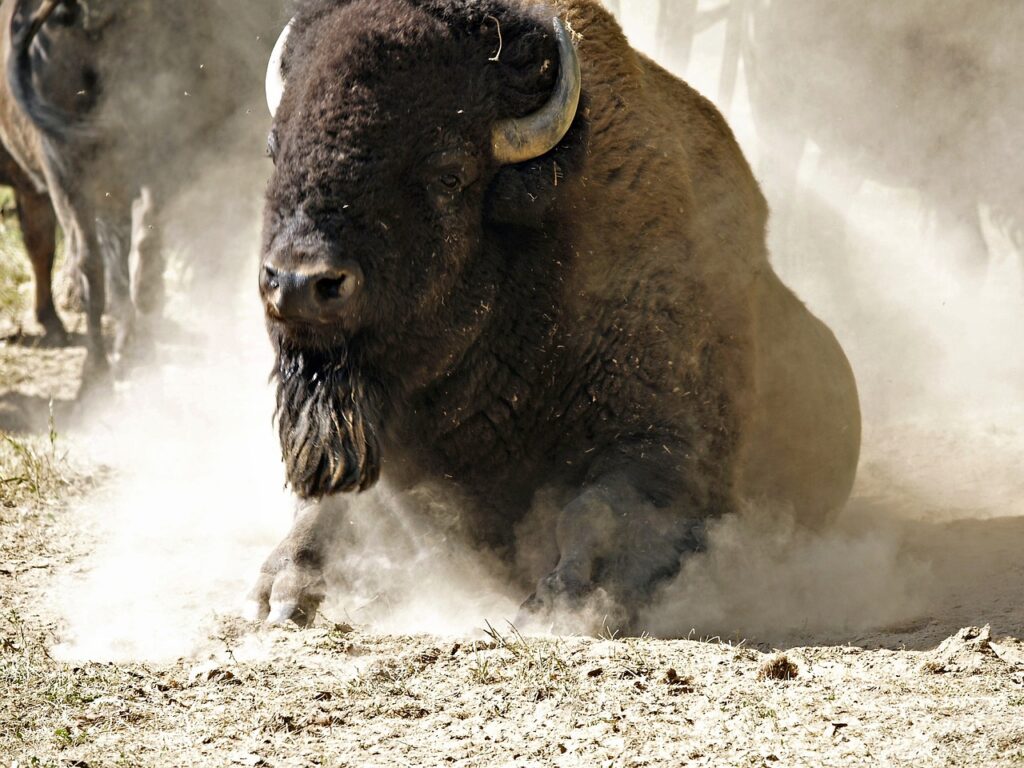
Physical adaptations:
Large head and powerful neck muscles: Bison have a large head and powerful neck muscles, which are adapted for grazing on tough vegetation and pushing through snow to access food.
Hooves: Bison have wide, cloven hooves that are adapted for walking on varied terrain and digging through snow to access vegetation in winter.
Behavioral adaptations:
Grazing behavior: Bison are grazers, feeding on grasses and sedges that grow on the plains and meadows of North America.
Migration: Bison historically migrated across large areas of North America in search of food and water, which helped to distribute their grazing pressure and prevent overgrazing in one area.
Physiological adaptations:
Efficient digestion: Bison have a specialized digestive system that is adapted for breaking down tough plant material. They have a four-chambered stomach that allows for efficient digestion and absorption of nutrients.
Water conservation: Bison are able to conserve water and prevent dehydration by producing concentrated urine and retaining water in their bodies.
17. Parrots
Parrots are a group of herbivorous birds that are found in tropical and subtropical regions around the world.
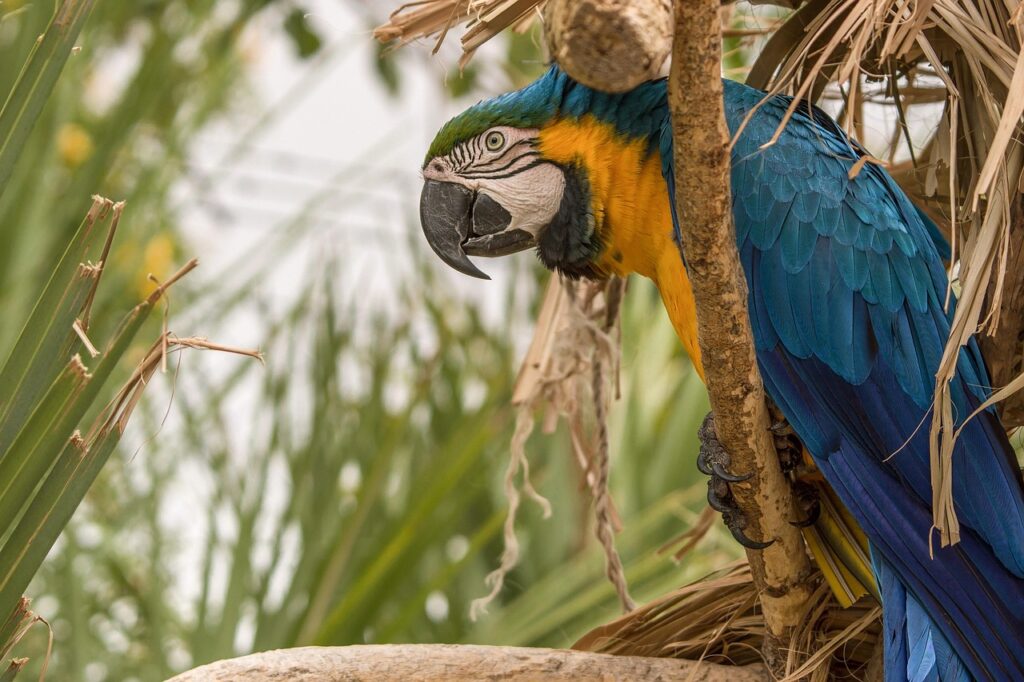
Physical adaptations:
Beak: Parrots have a strong, curved beak that is adapted for cracking open tough seeds and nuts.
Feet: Parrots have strong feet with two toes pointing forward and two pointing backward, which allows them to grasp and manipulate food while perching.
Behavioral adaptations:
Seed and fruit consumption: Parrots are known for their consumption of seeds, nuts, and fruits, which they obtain by cracking open hard shells and husks.
Food hoarding: Some parrot species have been observed hoarding food in their nests or in crevices in trees, which allows them to access food during times when it is less abundant.
Physiological adaptations:
Crop: Parrots have a crop, which is a specialized pouch in their throat that stores food temporarily before it is digested.
Efficient digestion: Parrots have a specialized digestive system that is adapted for breaking down tough plant material. They have a two-part stomach, with the first part (the proventriculus) secreting digestive enzymes and the second part (the ventriculus or gizzard) grinding and breaking down food.
18. Geese
Geese are herbivorous waterfowl that are found in many parts of the world. They are often found in wetland habitats, such as ponds, lakes, and rivers.
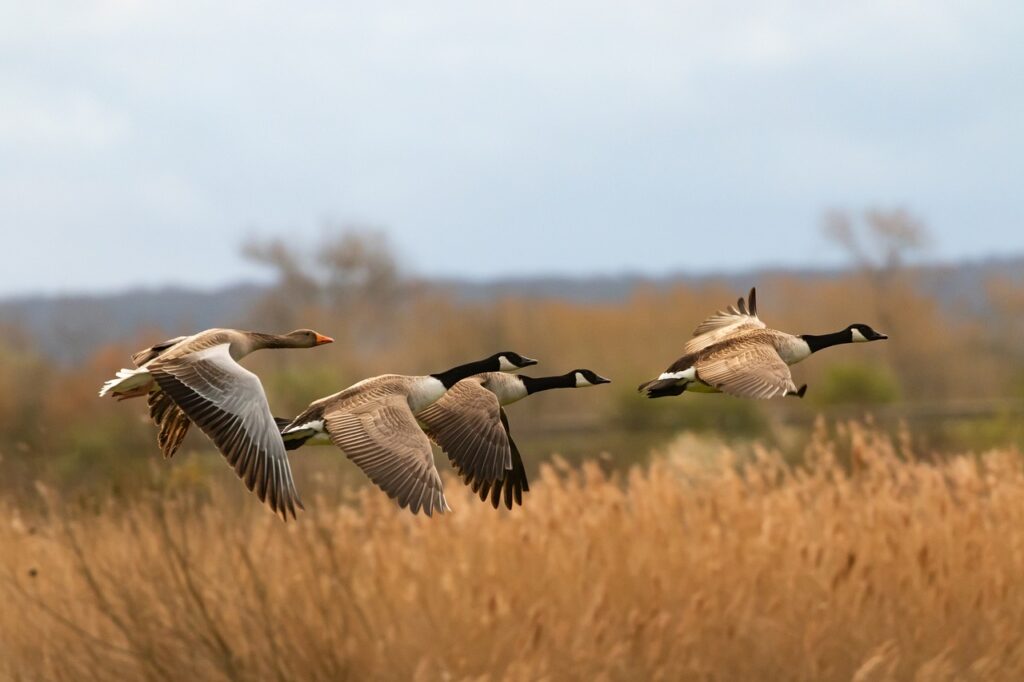
Physical adaptations:
Beak: Geese have a broad, flat beak that is adapted for grazing on grasses and other vegetation.
Webbed feet: Geese have webbed feet that are adapted for swimming in water and foraging in wetland habitats.
Behavioral adaptations:
Grazing behavior: Geese are primarily grazers, feeding on grasses, sedges, and other vegetation that grows in wetland habitats.
Seasonal migration: Many species of geese are migratory, traveling long distances each year between breeding and wintering grounds to access the best food resources.
Physiological adaptations:
Efficient digestion: Geese have a specialized digestive system that is adapted for breaking down tough plant material. They have a four-chambered stomach, similar to other ruminants, that allows them to efficiently extract nutrients from fibrous vegetation.
Water conservation: Geese are able to conserve water and prevent dehydration by producing concentrated urine and retaining water in their bodies.
19. Turkeys
Turkeys are large, herbivorous birds that are native to North America. They are primarily ground-dwelling birds and are found in a variety of habitats, including forests, grasslands, and agricultural areas.
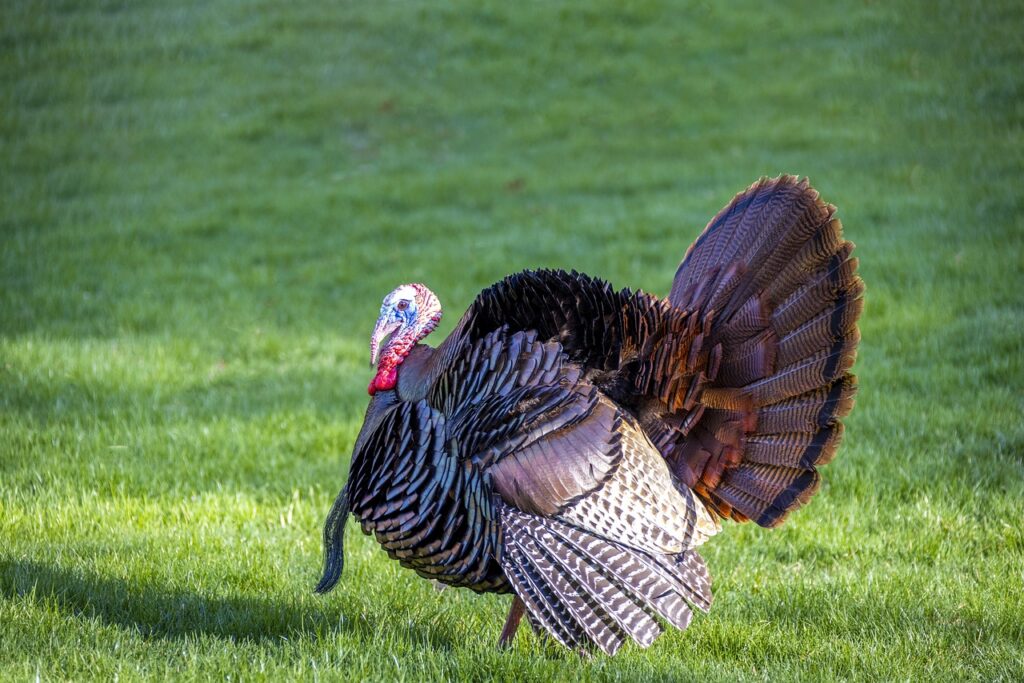
Physical adaptations:
Beak: Turkeys have a short, strong beak that is adapted for pecking at and pulling up plants.
Feet: Turkeys have strong, sturdy legs and feet with sharp claws that are adapted for scratching at the ground and foraging for food.
Behavioral adaptations:
Grazing behavior: Turkeys are primarily grazers, feeding on grasses, herbs, and other vegetation. They will also eat berries, nuts, and seeds when available.
Seasonal migration: Some turkey populations are migratory, traveling long distances each year between breeding and wintering grounds to access the best food resources.
Physiological adaptations:
Crop: Turkeys have a crop, which is a muscular pouch in their esophagus that stores food before it enters their stomach. This allows them to eat quickly and then digest their food later, which is an adaptation for survival in areas where food may be scarce.
Gizzard: Turkeys have a gizzard, which is a muscular part of their digestive system that grinds food into smaller particles. This is an adaptation for breaking down tough plant material and extracting nutrients from fibrous vegetation.
20. Pigeons
Pigeons, also known as rock doves, are small to medium-sized birds that are found in cities and towns all over the world. They are omnivores, but a significant portion of their diet is made up of plant matter.
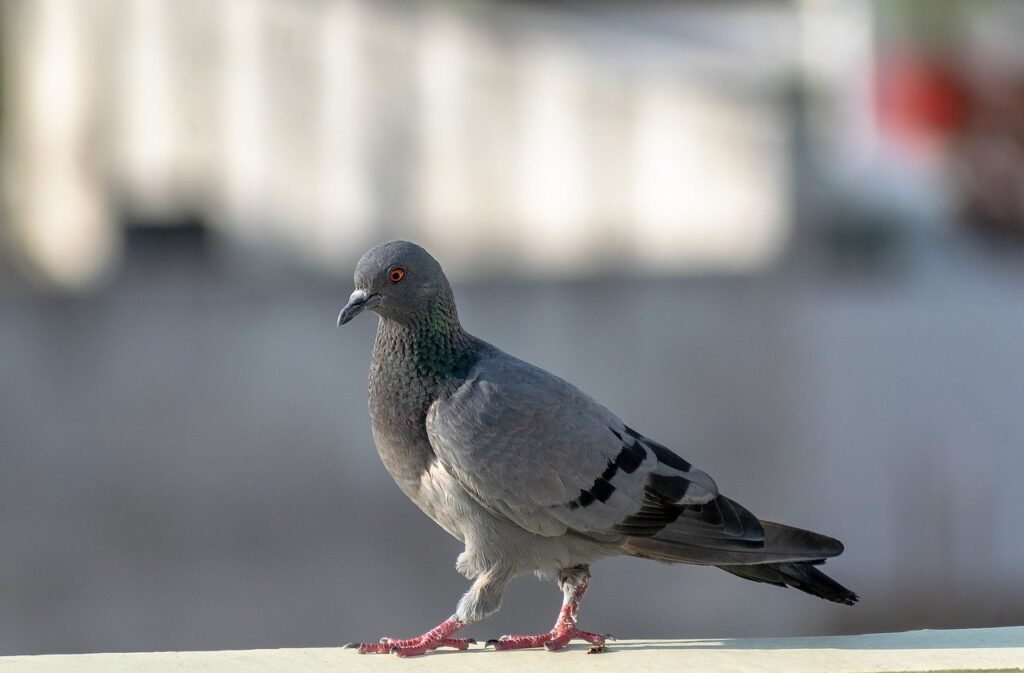
Physical adaptations:
Beak: Pigeons have a short, stout beak that is well-suited for cracking open seeds and small nuts.
Feet: Pigeons have strong, flexible feet that allow them to grip onto branches and surfaces. This helps them to access hard-to-reach seeds and fruits.
Behavioral adaptations:
Seed and grain consumption: Pigeons feed on a variety of seeds and grains, including corn, wheat, and millet. They are often found foraging for food on the ground or perched on ledges or windowsills.
Gleaning: Pigeons also practice a feeding behavior called gleaning, where they pick up small bits of plant material from the ground or from plants themselves. This helps them to supplement their diet with additional nutrients.
Physiological adaptations:
Crop: Like turkeys, pigeons have a crop, which allows them to store food for later digestion. This is important for pigeons that need to consume large amounts of food quickly to meet their nutritional needs.
Gizzard: Pigeons also have a gizzard, which helps to break down tough plant material. Their gizzard is relatively large compared to their body size, which allows them to effectively extract nutrients from fibrous vegetation.
21. Chickens
Chickens are domesticated birds that are commonly kept for their meat and eggs. They are omnivores, but their diet primarily consists of plant matter.
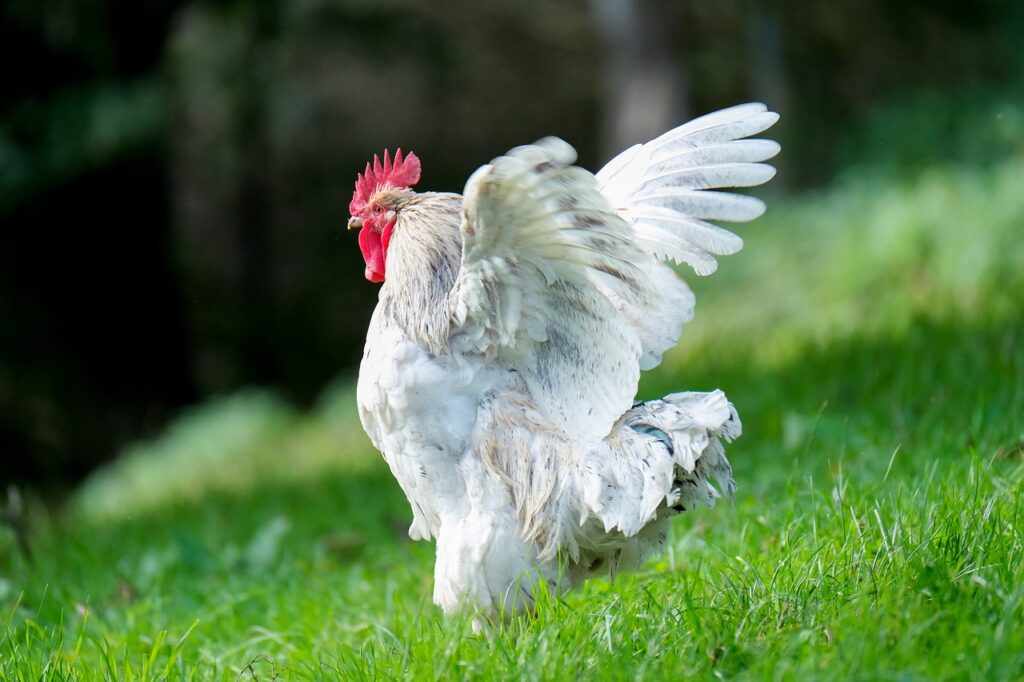
Physical adaptations:
Beak: Chickens have a short, pointed beak that is well-suited for pecking at seeds, grains, and other plant matter.
Feet: Chickens have strong, scaly feet that allow them to scratch at the ground to uncover seeds and insects. They also use their feet to roost and perch in trees and on other elevated surfaces.
Behavioral adaptations:
Scratch for food: Chickens have a natural instinct to scratch at the ground in search of food. This behavior allows them to uncover and consume a variety of plant matter, including seeds, grains, and vegetation.
Dust baths: Chickens take dust baths to keep their feathers clean and healthy, but this behavior also helps to control parasites that can harm them. They often use dry, dusty soil or sand to create a depression in which to bathe. This behavior may also help to remove small seeds and other plant matter from their feathers.
Physiological adaptations:
Crop: Chickens, like turkeys and pigeons, have a crop that allows them to store food for later digestion. This is important for chickens that need to consume large amounts of food quickly to meet their nutritional needs.
Gizzard: Chickens have a muscular gizzard that grinds up tough plant material. The gizzard is lined with small stones that the chicken has swallowed, which help to break down the food.
22. Iguanas
Iguanas are herbivorous lizards that are native to Central and South America. They have several adaptations that allow them to efficiently consume and digest plant matter.
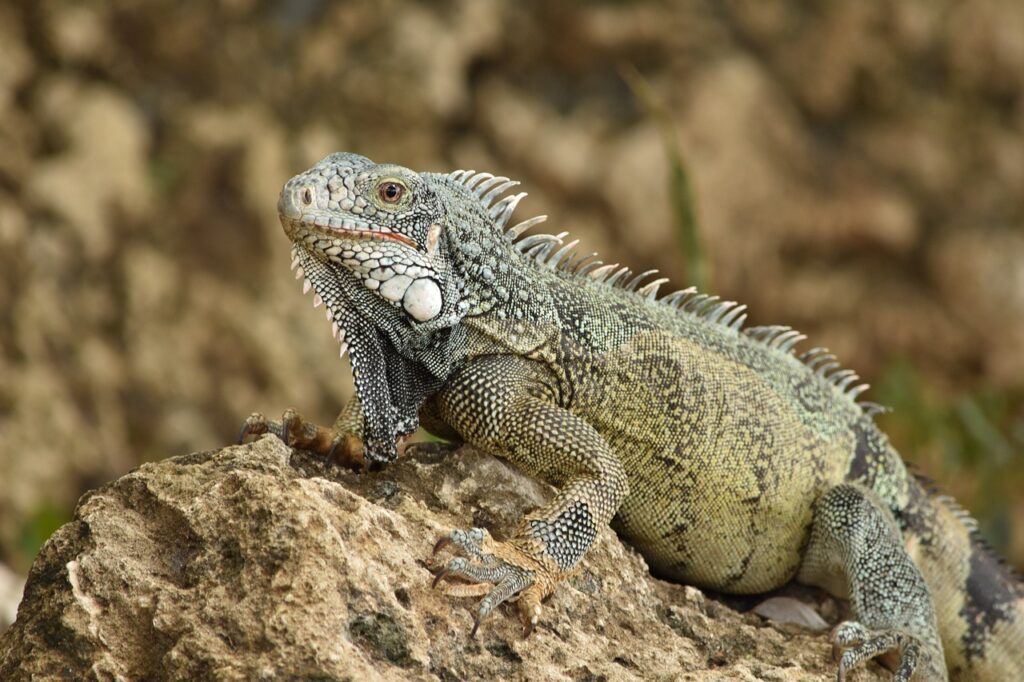
Physical adaptations:
Teeth: Iguanas have teeth that are specifically adapted for cutting and grinding tough plant material. Their front teeth are sharp and pointed, while their back teeth are flattened and designed for grinding.
Long tail: Iguanas have a long, muscular tail that can be used for balance and support when climbing trees to access leaves and fruits.
Behavioral adaptations:
Selective feeding: Iguanas have a highly selective feeding behavior and tend to consume only certain types of plants. This allows them to maximize their nutrient intake while minimizing the amount of energy they need to expend searching for food.
Basking: Iguanas are ectothermic, meaning that their body temperature is regulated by the environment. They bask in the sun to warm themselves up and increase their metabolism, which allows them to digest their food more efficiently.
Physiological adaptations:
Hindgut fermentation: Iguanas have a unique digestive system that allows them to extract nutrients from tough, fibrous plant material. They have a large, complex colon that is home to a variety of microorganisms that break down cellulose and other plant fibers through a process called hindgut fermentation.
Efficient water use: Iguanas are adapted to living in arid environments and are able to conserve water through several mechanisms, including reabsorbing water from their feces and producing highly concentrated urine.
23. Tortoises
Tortoises are herbivorous reptiles that are well adapted to consuming and digesting plant material. They are found in a variety of habitats around the world, including deserts, grasslands, and forests.
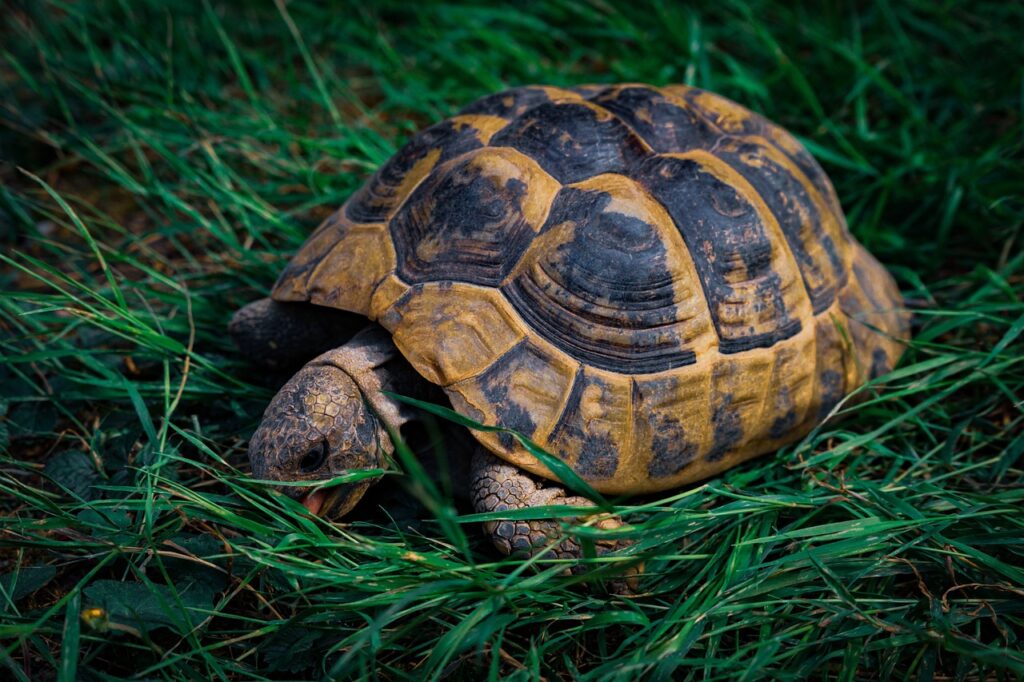
Physical adaptations:
Beak-like mouth: Tortoises have a beak-like mouth that is well suited for biting and tearing tough plant material.
Heavy shell: Tortoises have a heavy, protective shell that allows them to withdraw their head, legs, and tail into the shell when threatened by predators. The shell also serves as a mineral storage system, allowing tortoises to access nutrients during times of scarcity.
Behavioral adaptations:
Selective feeding: Tortoises have a highly selective feeding behavior and tend to consume only certain types of plants. This allows them to maximize their nutrient intake while minimizing the amount of energy they need to expend searching for food.
Seasonal feeding: In many regions, tortoises exhibit seasonal changes in feeding behavior, consuming more food during the rainy season when plant growth is abundant and less during the dry season when food is scarce.
Physiological adaptations:
Slow metabolism: Tortoises have a slow metabolism, which allows them to survive for long periods of time without food. This is an important adaptation for surviving in arid environments where food is scarce.
Efficient water use: Tortoises are adapted to living in arid environments and are able to conserve water through several mechanisms, including reabsorbing water from their feces and producing highly concentrated urine.
24. Gorillas
Gorillas are herbivorous primates that primarily feed on leaves, stems, and fruits in their natural habitats. They are found in the forests of central Africa and are one of the largest primates in the world.
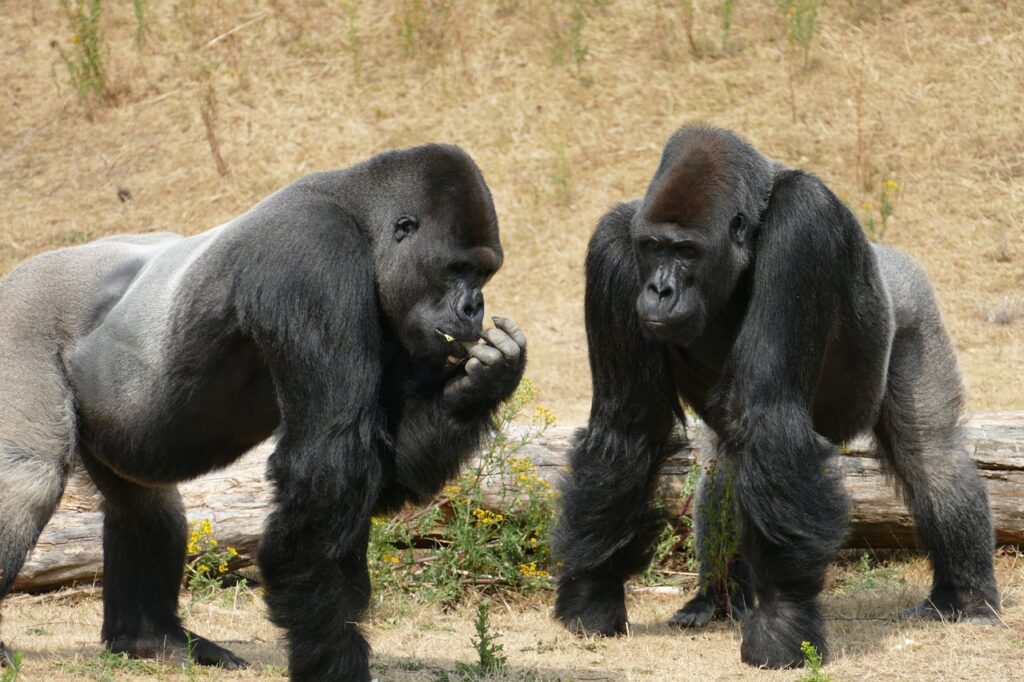
Physical adaptations:
Strong jaws and teeth: Gorillas have strong jaws and teeth that are well adapted for grinding tough plant material.
Broad chest: Gorillas have a broad chest and powerful upper body that allows them to climb trees and break off branches to access leaves and fruits.
Behavioral adaptations:
Selective feeding: Gorillas have a highly selective feeding behavior and tend to consume only certain types of plants that are high in nutrients.
Daily foraging: Gorillas spend much of their day foraging for food, moving through their forest habitats in search of leaves, fruits, and other plant material.
Physiological adaptations:
Efficient digestion: Gorillas have a specialized stomach with multiple chambers that allows for efficient digestion of tough plant material. They also engage in re-chewing their food (also known as rumination) to further break down plant matter.
Low energy expenditure: Gorillas have a low metabolic rate, which allows them to conserve energy and survive on relatively low amounts of food.
25. Chimpanzees
Chimpanzees are herbivorous primates that primarily feed on fruits, leaves, and flowers in their natural habitats. They are found in the forests of central and western Africa and are one of the closest living relatives of humans.
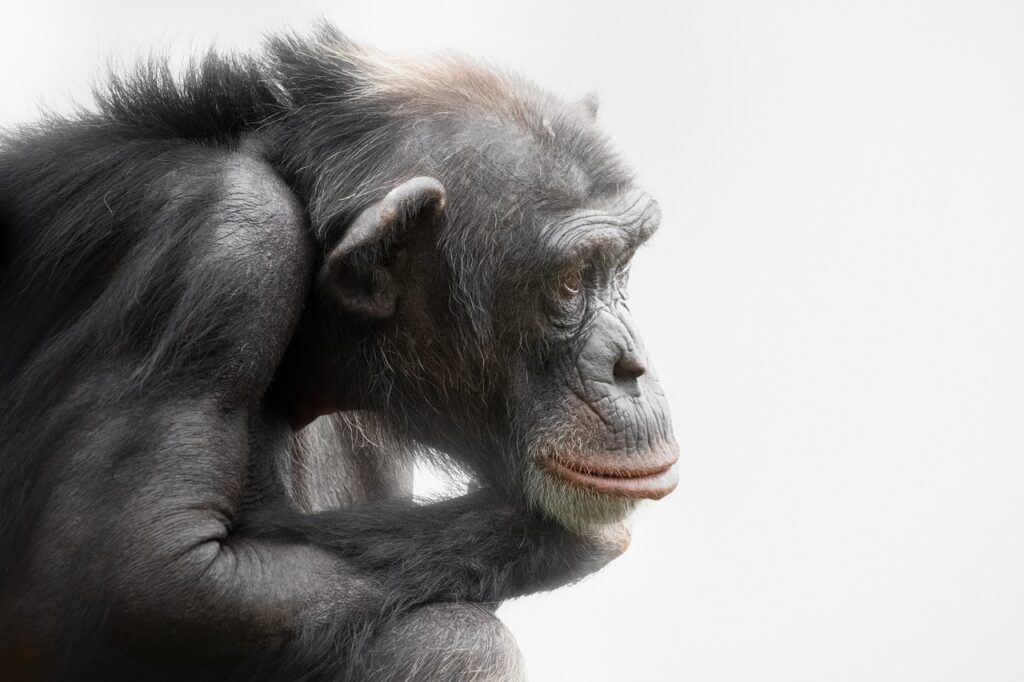
Physical adaptations:
Opposable thumbs: Chimpanzees have opposable thumbs that are well adapted for grasping and manipulating plant material, such as fruits and leaves.
Strong jaws and teeth: Chimpanzees have strong jaws and teeth that are well adapted for crushing tough plant material.
Behavioral adaptations:
Tool use: Chimpanzees are known for their ability to use tools, including sticks and rocks, to access and process plant material. For example, they may use sticks to extract insects from trees or rocks to crack open nuts.
Group foraging: Chimpanzees often forage for food in groups, which allows them to share information about the location of food sources and collaborate to access hard-to-reach plant material.
Physiological adaptations:
Efficient digestion: Chimpanzees have a specialized stomach with multiple chambers that allows for efficient digestion of tough plant material. They also engage in re-chewing their food (also known as rumination) to further break down plant matter.
Low energy expenditure: Chimpanzees have a low metabolic rate, which allows them to conserve energy and survive on relatively low amounts of food.
Recap of the importance of herbivorous animals in the ecosystem
Herbivorous animals are those that primarily eat plants as their main source of nutrition. They are an important component of the ecosystem, playing a crucial role in maintaining the balance of the food chain and contributing to the health and stability of natural systems.
Herbivorous animals come in different shapes and sizes, with a diverse range of adaptations to enable them to feed on plant material. Some, such as grazers, have specialized teeth and digestive systems for breaking down tough plant material, while others, such as frugivores, are adapted to eating fruits and dispersing seeds.
The importance of herbivorous animals in the ecosystem is multifaceted. They are an important food source for predators, which helps to maintain biodiversity and balance in the ecosystem. They promote the growth of new plant life through seed dispersal and contribute to nutrient cycling through their feces.
Grazers help to control the growth of grasses and other vegetation, which can prevent wildfires and promote the growth of other plant species.
Browsers help to maintain the diversity of plant species by preventing the overgrowth of any one type of plant.
Frugivores play a key role in seed dispersal, which is essential for the regeneration of plant populations.
Herbivorous animals are essential components of the ecosystem, and their conservation and management are important for the health and stability of natural systems.

Erzsebet Frey (Eli Frey) is an ecologist and online entrepreneur with a Master of Science in Ecology from the University of Belgrade. Originally from Serbia, she has lived in Sri Lanka since 2017. Eli has worked internationally in countries like Oman, Brazil, Germany, and Sri Lanka. In 2018, she expanded into SEO and blogging, completing courses from UC Davis and Edinburgh. Eli has founded multiple websites focused on biology, ecology, environmental science, sustainable and simple living, and outdoor activities. She enjoys creating nature and simple living videos on YouTube and participates in speleology, diving, and hiking.

